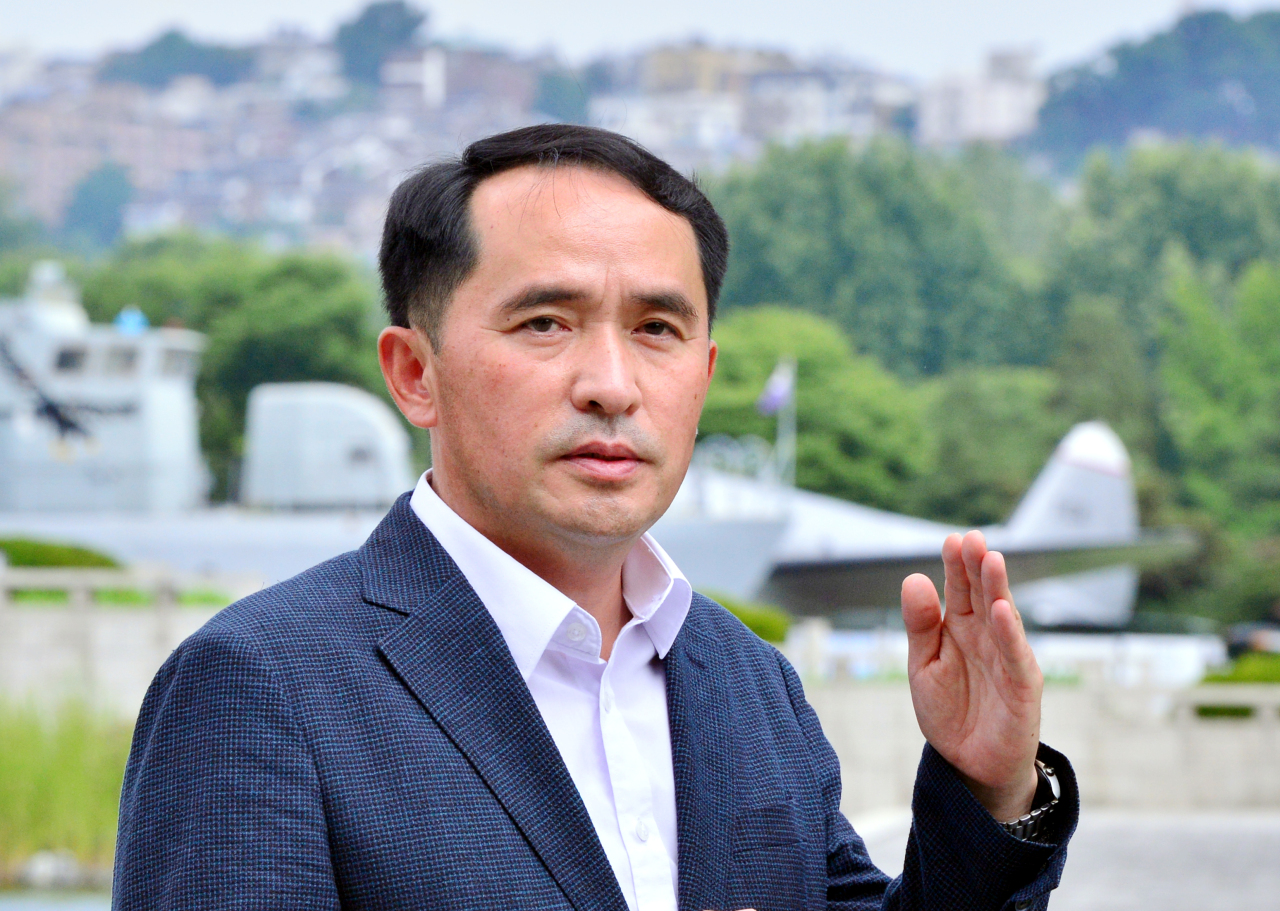Conspiracy theories over the 2010 sinking of the warship Cheonan still hold sway over many South Koreans because Seoul bungled the initial probe, the ship’s former captain says.
A joint investigation by South Korea, the US, the UK, Australia and Sweden in May 2010, two months after the sinking, found that the North attacked the South’s corvette, leaving 46 seamen dead. North Korea has denied any involvement. Some in South Korea believe there could be another explanation.
“The government got off on the wrong foot with the initial inquiry,” Cheonan Capt. Choi Won-il said in an interview with The Korea Herald. He retired in February and has since been fighting what he calls a systematic disinformation campaign built on decadeslong conspiracy theories.
“It initially ruled out a North Korean attack but reversed that in what many saw as a rushed decision. The sudden turn, which came just before the local election, got people thinking twice.”
Investigation that bred conspiracy theoriesAt the time, the conservative Lee Myung-bak administration, which blamed North Korea for the sinking upon seeing the findings of the multinational investigation after dismissing the notion at first, rolled out sanctions that cut all trade with Pyongyang, just a week before local elections took place in Seoul.
Lee was accused of using the incident to rally support for conservatives, who attacked liberals as being soft on North Korea.
Lee failed to make decisive evidence stick, Choi said, referring to torpedo parts salvaged from the sea floor. Lettering on the projectile matched a known North Korean design.
The government was embarrassed for having used the wrong blueprint when it detailed its findings about the torpedo that North Korea used to sink the Cheonan near the inter-Korean maritime border in the West Sea.
“It was just clumsy. They just dropped the ball big time,” Choi said. Later, a growing number of skeptics increasingly found themselves attracting greater attention to alternative explanations -- saying, for example, that the ship sank on its own after hitting a reef.
Choi rejected explanations like these, calling them conspiracy theories and saying, “They absolutely make no sense. Our travel records would say the same thing, once they’re made public.” The Ministry of National Defense is looking into whether to declassify the records Choi has requested.
Other conspiracy theories -- such as the idea that the Cheonan was hit by the US or another foreign power -- go against common sense too, Choi said, noting that joint drills with the US never took place near the maritime border in the West Sea because of how North Korea would respond.
Signs of unusual activity overlookedThe captain argued that the government could have stopped or at least avoided the sinking because there had been signs of unusual North Korean activity prior to the attack. North Korea had been doubling down on carrying out strong retaliation against the South for naval skirmishes months earlier.
Choi shared an internal memo that showed the military security chief informed the Defense Ministry and Joint Chiefs of Staff about the activity. The two chiefs discarded the intelligence, with the defense minister later admitting at a parliamentary hearing that was not in his best judgment.
Another sign was picked up on the morning of the attack on March 26, 2010. The Joint Chiefs of Staff said it issued a warning at the time that a North Korean submarine had gone missing in the West Sea where the Cheonan was operating.
Choi disputes the claim. He argued that the military later dismissed the activity as nothing unusual. The captain said he needed not have taken precautions to “zigzag the ship” to prepare for potential aggression, as the military maintained.
“There had been no alarm and it was a peacetime operation. Otherwise, why would it take hours for attack helicopters to rescue us after we got hit?” Choi said, noting that the helicopters, which would have been on standby had the warning been in place, should have come much sooner.
The helicopters arrived close to midnight, about two hours after the 1,200-metric-ton vessel was broken in half.
Combating disinformation campaignCapt. Choi said he expected an uphill battle against those still refusing to acknowledge that he and his 46 seamen were the victims of a North Korean attack.
“I just don’t see those dissenters giving up what they’ve been doing for the past 10 years. It’s good money they make off of selling books, making TV appearances. It’s clever disinformation, I’d give them that,” Choi said.
Shin Sang-cheol, one of the vocal dissenters who sat on the multinational team but has since claimed the findings were manipulated because the vessel had collided with another unidentified ship, recently asked a government committee investigating suspicious deaths in the military to reexamine the sinking.
Shin is awaiting a Supreme Court ruling on a defamation case over his accusations that the Defense Ministry and officials who handled the sinking tried to cover up the incident.
The chair of the committee, which reversed its decision to open an inquiry amid public outcry, apologized to Choi and the victims’ families, then resigned. Choi sued the chair for abusing his office, allegeding he pushed Shin’s complaint even though Shin was not qualified to file one.
“The reason this campaign is gaining traction is they make everything look simple,” Choi said. Science is hard, and laying it out for everyone looking to see some scientific proof in the sinking is harder; the dissenters give out an abridged version of it, though all the way wrong, according to Choi.
“It’s like torpedo after torpedo,” Choi said, adding the campaign is now aiming to smear every seaman aboard the Cheonan. “We won’t stand down, we just won’t.”
By Choi Si-young (
siyoungchoi@heraldcorp.com)





![[Exclusive] Hyundai Mobis eyes closer ties with BYD](http://res.heraldm.com/phpwas/restmb_idxmake.php?idx=644&simg=/content/image/2024/11/25/20241125050044_0.jpg)
![[Herald Review] 'Gangnam B-Side' combines social realism with masterful suspense, performance](http://res.heraldm.com/phpwas/restmb_idxmake.php?idx=644&simg=/content/image/2024/11/25/20241125050072_0.jpg)

